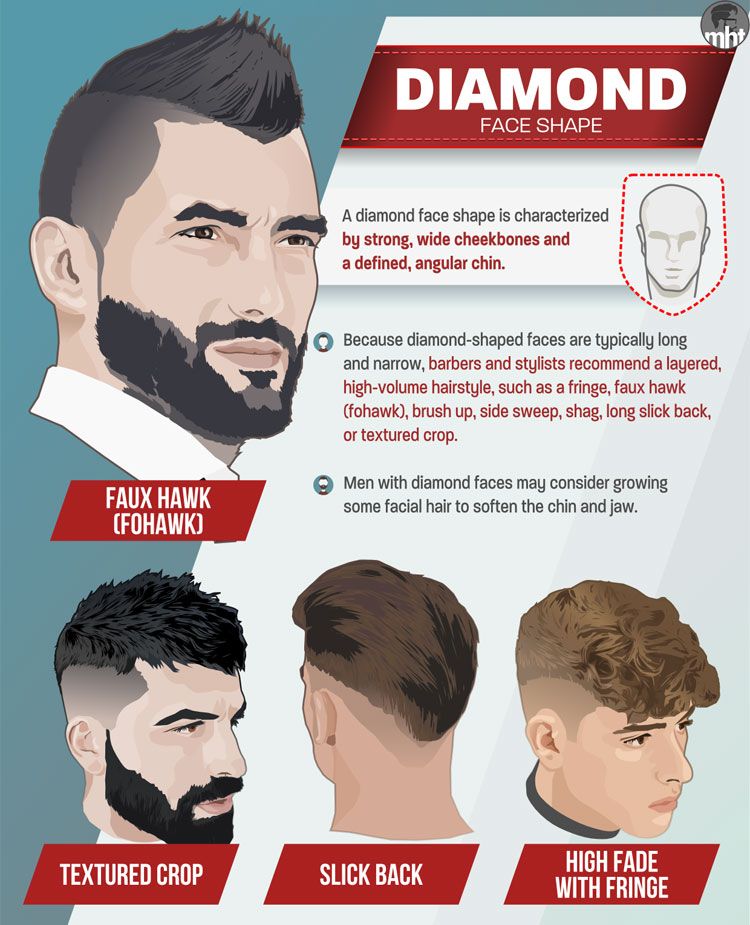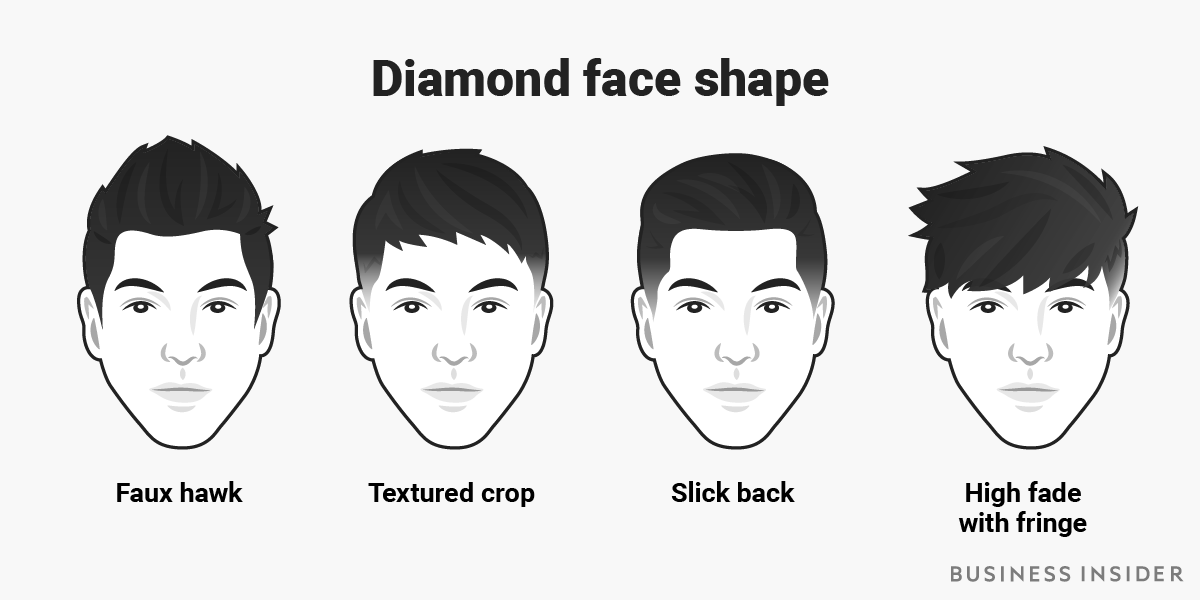Deleted member 10413
🌸🌼❤️✨👑✨❤️🌼🌸
- Joined
- Oct 23, 2020
- Posts
- 3,305
- Reputation
- 9,117
Why Identify Your Face Shape?

Being able to identify and better understand your face shape is an invaluable asset for the discerning gentleman. Some men may consider it superficial but you will be amazed in how your approach to wardrobe and personal grooming choices will drastically benefit. Know your features and learn how to best bring them into the limelight.
We’ve already highlighted the importance of our faces and how we present ourselves to the outside world. Even if a man isn’t particularly concerned with looking impeccable at all times, keeping the potential of his features in mind when picking out new hairstyles or beards gives him a huge advantage over his peers.
Remember that an understanding of your morphology gives you tremendous power in fine-tuning your appearance and the attitude you exude.
Perhaps you’re here because you’ve already read one of our guides on hairstyles or beards and need to calculate your face shape before going any further?
Maybe you’re just curious because you’ve heard about oblong or oval face shapes but don’t actually know yet which best fits your description. Let us put your mind at ease and guide you from here.
How To Find Your Face Shape
Firstly, note that although the page is written with men in mind, it can also be used for women.
If you’re a busy man at work, surrounded by colleagues and under your superviser’s watchful eye, you’d understandably feel uncomfortable asking the intern to pass you the ruler and start measuring away in the middle of an open space.
We understand and we’ve devised our own quick and dirty face shape infographic:

Bear in mind that the above infographic is designed for quick consultation to better understand your face shape. Still confused or want a more accurate result? Keep reading to learn more!
If you’re a busy man at work, surrounded by colleagues and under your superviser’s watchful eye, you’d understandably feel uncomfortable asking the intern to pass you the ruler and start measuring away in the middle of an open space.
We understand and we’ve devised our own quick and dirty face shape infographic:

Bear in mind that the above infographic is designed for quick consultation to better understand your face shape. Still confused or want a more accurate result? Keep reading to learn more!
Accurate Method For Identifying Your Face Shape
If the above infographic didn’t do it for you and you need or want something a little more precise, we’ve got an easy step-by-step method all laid out below.
Firstly, how does it work? It’s rather simple. By isolating four facial features and measuring them, we can easily determine a person’s face shape by comparing how they differ. Furthermore, no complex calculations are required as ratios are simply ordered from largest to smallest. The graphic below will help you understand how it works.

Before you continue, you’ll need the following items to find your face shape:

This is the distance between the tip of your hairline to the point of your chin. If you have a widow’s peak (a hairline in the shape of a V), you’re all set to measure from there.
Having difficulty finding the hairline? Don’t worry, you’re not alone. Just facepalm in despair! In placing your palm over your forehead with the little finger wrapped across the eyebrows, the knuckle of your index finger will now be over the hairline’s tip.
Take the measurement and note it down. Metrical or imperial, the unit doesn’t matter. We just need a value.

Extend your index and middle finger. Place your middle finger on the outer tip of your eyebrow and slide it up towards your hairline.
When about halfway, stop and check where your index finger is resting. This should be somewhere between the temple and the hairline, which is the widest part of your forehead.
Measure from here to the opposite side and take note.

Place your finger on the outer corner of your eye (don’t poke it) and run it down until you find bone.
Congratulations, you found your cheekbone – you probably already knew it was here but we just needed to make sure. Measure from here to the opposite point.

If you reach in below your ear as if you were taking your pulse after an intensive jog, your middle finger will be just under your jawbone.
Measure this down to the tip of your chin. You’ll want to multiply this by two to account for the entire jaw and because maths is fun!

Now the figures have been hastily jotted down like the coffee requests on an intern’s first day, list your features out from largest to smallest (make a note if they’re the same or very similar).
Remember that we only need a few measurements from isolated features to identify a face shape. Nevertheless, don’t hesitate to double check by comparing the different face shapes we’ve listed out below.
Bear in mind that there’s an off-chance you may fall into more than one category. Don’t fret, it’s not uncommon! We’re in a ready-to-wear and not a made-to-measure context but the advantage is that you’ll be able to pick and mix our advice in several sections and tailor them to your needs.

Your face length is the largest measurement, followed by your cheekbones, forehead width and jawline. This means that you have a Diamond face shape.

With a forehead width larger than your cheekbones and jawline, you have a heart-shaped face.
Your face length is the largest whilst your forehead, cheekbones and jawline are all similar in length, which means that you are an Oblong!

With a face length longer than the cheekbone width as well as a forehead width larger than your jawline, yours is what is known as an Oval-shaped face.

Whilst your face cheekbone width and face length are alike, they’re both larger than your similarly-sized forehead and jawline. This means that your face is Round.

All measurements are similar on a Square face shapewith an often pronounced jawline.

If you have a Triangle face shape, jawline is wider than your cheekbone width, which in turn is wider than your forehead.
Firstly, how does it work? It’s rather simple. By isolating four facial features and measuring them, we can easily determine a person’s face shape by comparing how they differ. Furthermore, no complex calculations are required as ratios are simply ordered from largest to smallest. The graphic below will help you understand how it works.

Before you continue, you’ll need the following items to find your face shape:
- A Mirror (to admire yourself).
- A tape measure (optional but will provide accurate results).
- An Ikea pencil (something to write with)
- The back of an envelope (something to write on)
Steps For Measuring Your Face Shape
Measuring your face shape consists of taking the following steps and measurements:- Measure Your Face Length
- Measure Your Forehead Width
- Note Your Cheekbone Width
- Measure Your Jawline
- Measurement Write-Up
1. Measure Your Face Length

This is the distance between the tip of your hairline to the point of your chin. If you have a widow’s peak (a hairline in the shape of a V), you’re all set to measure from there.
Having difficulty finding the hairline? Don’t worry, you’re not alone. Just facepalm in despair! In placing your palm over your forehead with the little finger wrapped across the eyebrows, the knuckle of your index finger will now be over the hairline’s tip.
Take the measurement and note it down. Metrical or imperial, the unit doesn’t matter. We just need a value.
2. Measure Your Forehead

Extend your index and middle finger. Place your middle finger on the outer tip of your eyebrow and slide it up towards your hairline.
When about halfway, stop and check where your index finger is resting. This should be somewhere between the temple and the hairline, which is the widest part of your forehead.
Measure from here to the opposite side and take note.
3. Measure Your Cheekbones

Place your finger on the outer corner of your eye (don’t poke it) and run it down until you find bone.
Congratulations, you found your cheekbone – you probably already knew it was here but we just needed to make sure. Measure from here to the opposite point.
4. Measure Your Jawline

If you reach in below your ear as if you were taking your pulse after an intensive jog, your middle finger will be just under your jawbone.
Measure this down to the tip of your chin. You’ll want to multiply this by two to account for the entire jaw and because maths is fun!
5. Write-Up Your Measurements

Now the figures have been hastily jotted down like the coffee requests on an intern’s first day, list your features out from largest to smallest (make a note if they’re the same or very similar).
Remember that we only need a few measurements from isolated features to identify a face shape. Nevertheless, don’t hesitate to double check by comparing the different face shapes we’ve listed out below.
Compare Your Results
Finally, let’s see how these compare to our 7 face outlines!- Face Length > Cheekbone Width > Forehead Width > Jawline
- Forehead Width > Cheekbone Width > Jawline [Pointed Chin]
- Face Length > (Cheekbone Width ≈ Forehead Width ≈ Jawline)
- Face Length > Cheekbone Width & Forehead Width > Jawline
- (Face Length ≈ Cheekbone Width) > (Forehead Width ≈ Jawline) [Rounded Jaw]
- Face Length ≈ Cheekbone Width ≈ Forehead Witch ≈ Jawline [Hard Jawed]
- Jawline > Cheekbone Width > Forehead Width
Bear in mind that there’s an off-chance you may fall into more than one category. Don’t fret, it’s not uncommon! We’re in a ready-to-wear and not a made-to-measure context but the advantage is that you’ll be able to pick and mix our advice in several sections and tailor them to your needs.
Face Length > Cheekbone Width > Forehead Width > Jawline:

Your face length is the largest measurement, followed by your cheekbones, forehead width and jawline. This means that you have a Diamond face shape.
Forehead Width > Cheekbone Width > Jawline [Pointed Chin]:

With a forehead width larger than your cheekbones and jawline, you have a heart-shaped face.
Face Length > (Cheekbone Width ≈ Forehead Width ≈ Jawline):

Your face length is the largest whilst your forehead, cheekbones and jawline are all similar in length, which means that you are an Oblong!Face Length > Cheekbone Width & Forehead Width > Jawline:

With a face length longer than the cheekbone width as well as a forehead width larger than your jawline, yours is what is known as an Oval-shaped face.
(Face Length ≈ Cheekbone Width) > (Forehead Width ≈ Jawline) [Rounded Jaw]:

Whilst your face cheekbone width and face length are alike, they’re both larger than your similarly-sized forehead and jawline. This means that your face is Round.
Face Length ≈ Cheekbone Width ≈ Forehead Witch ≈ Jawline [Hard Jawed]:

All measurements are similar on a Square face shapewith an often pronounced jawline.
Jawline > Cheekbone Width > Forehead Width:

If you have a Triangle face shape, jawline is wider than your cheekbone width, which in turn is wider than your forehead.

Last edited:




